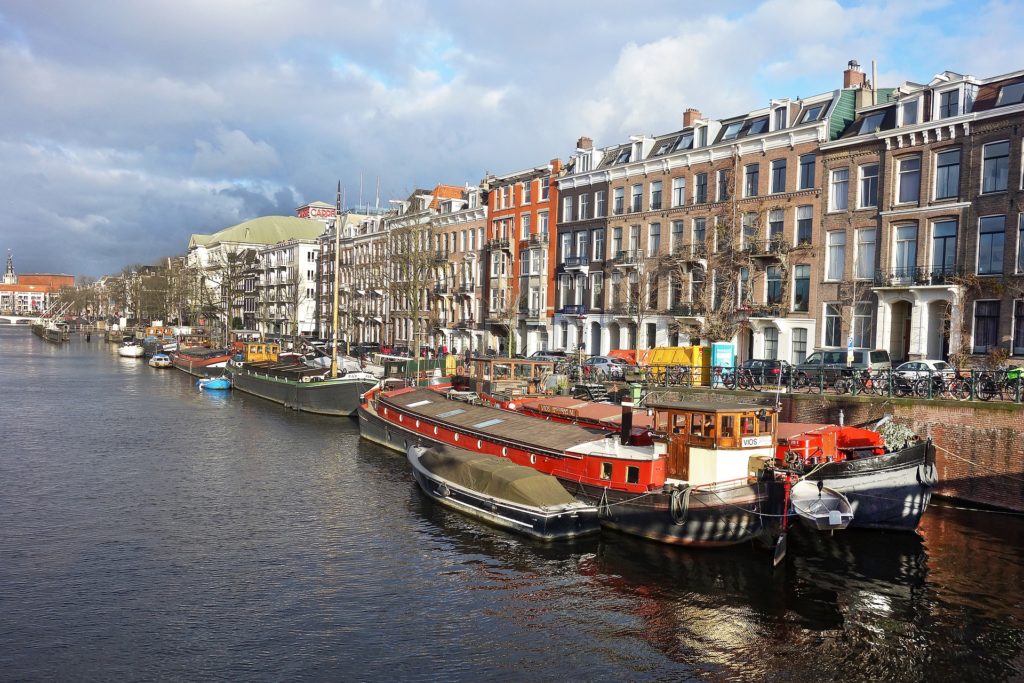 In this travel guide, I will share with you some of Amsterdam’s history, a list of places that I have visited, and my experiences from when I explored the city.
In this travel guide, I will share with you some of Amsterdam’s history, a list of places that I have visited, and my experiences from when I explored the city.
Venice of the North
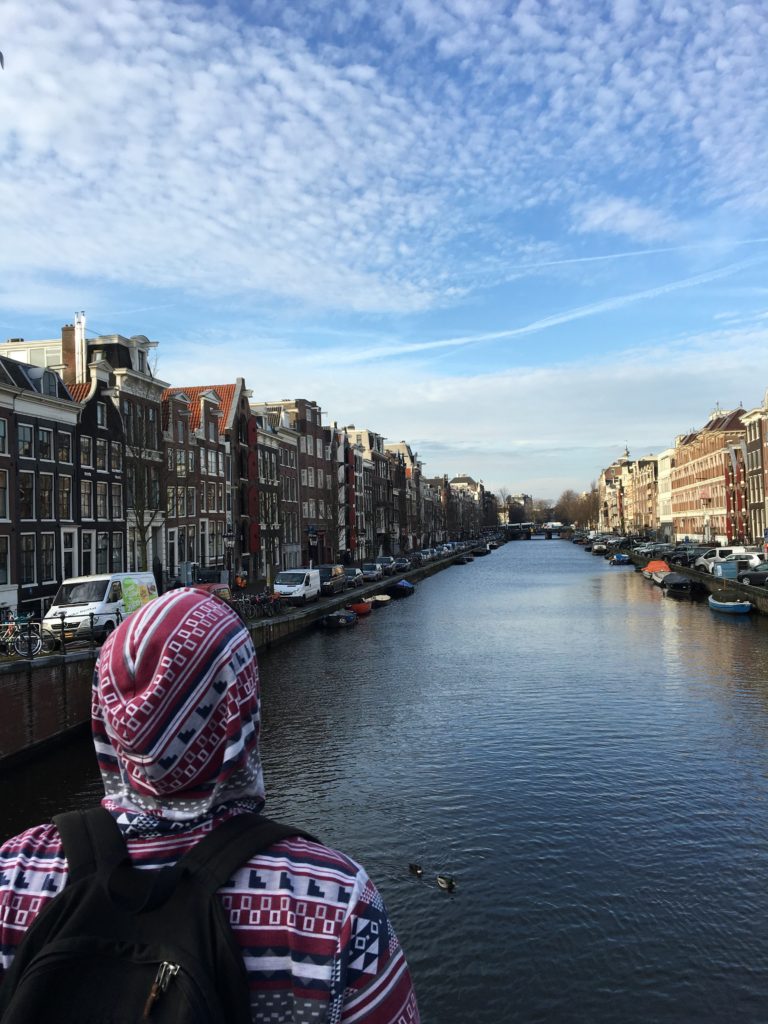 A nickname applicable to many Northern European countries with canals, but none are more deserving of the title than Amsterdam, Netherlands. Aem is Old Frisian for ‘river,’ Stelle is Frankish for ‘settlement,’ and dam means ‘dam’ or ‘dike.’ Each of these components gave the city its name, which literally translates to ‘people who have settled at the dike along the river.’ The city grew from farming and fishing, and during the French occupation of Holland, Napoleon Bonaparte named Amsterdam the capital of the Netherlands. The elaborate canal systems of Amsterdam weave throughout her interior and extend to the outer edges of the city. More than 2,500 immobile residential house boats line the sides of every canal and serve as homes for some locals. Others may live in the narrow houses along each canal which date back to the 17th century.
A nickname applicable to many Northern European countries with canals, but none are more deserving of the title than Amsterdam, Netherlands. Aem is Old Frisian for ‘river,’ Stelle is Frankish for ‘settlement,’ and dam means ‘dam’ or ‘dike.’ Each of these components gave the city its name, which literally translates to ‘people who have settled at the dike along the river.’ The city grew from farming and fishing, and during the French occupation of Holland, Napoleon Bonaparte named Amsterdam the capital of the Netherlands. The elaborate canal systems of Amsterdam weave throughout her interior and extend to the outer edges of the city. More than 2,500 immobile residential house boats line the sides of every canal and serve as homes for some locals. Others may live in the narrow houses along each canal which date back to the 17th century.
If you visit Amsterdam, you will quickly discover that cycling is the best way to get around the city. There are so many people that use bikes that instead of parking garages, you’ll see an abundance of multi-leveled bike parking platforms. Naturally, bike theft is the most common form of petty crime in Amsterdam. If the duration of your stay is limited, I recommend that you allot a day to explore the city via city walk, bike tour, bus tour, and/or canal tour.
Rijksmuseum
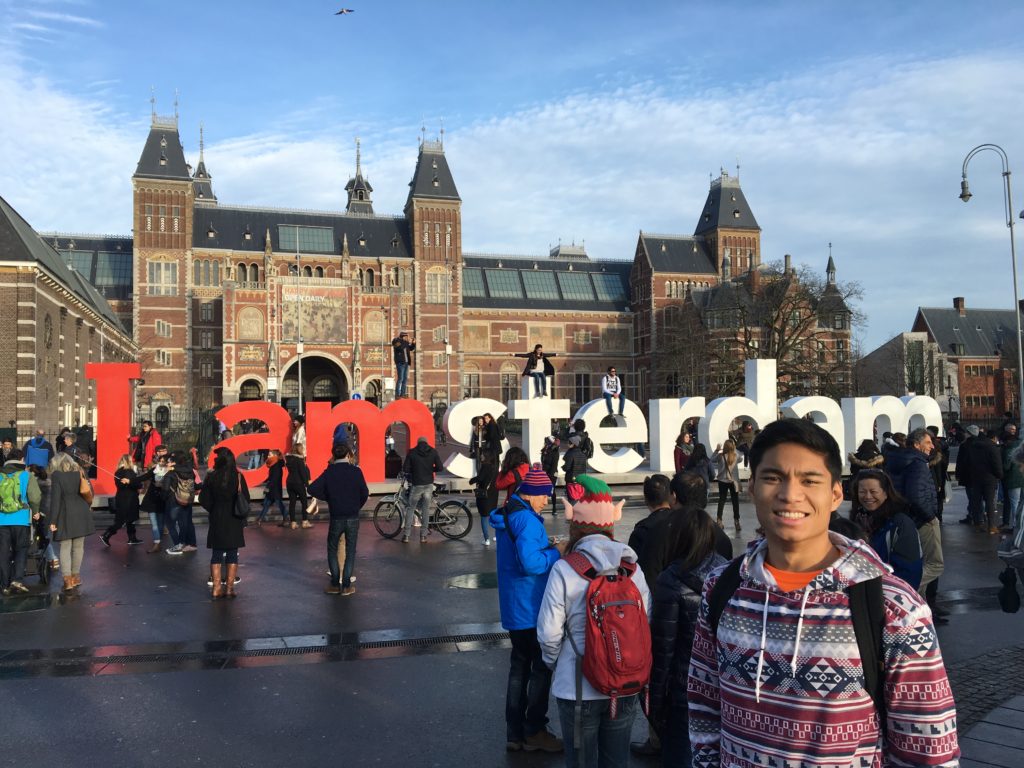 The exterior and interior structure of this museum showcases 17th century golden age architecture. This Dutch national art and history museum houses over 8,000 art pieces and artifacts. It is the most renowned museum in the Netherlands. Behind the museum is the museum plane/square, which represents the cultural heart of Amsterdam. It is here that you will find the famous I amsterdam sign.
The exterior and interior structure of this museum showcases 17th century golden age architecture. This Dutch national art and history museum houses over 8,000 art pieces and artifacts. It is the most renowned museum in the Netherlands. Behind the museum is the museum plane/square, which represents the cultural heart of Amsterdam. It is here that you will find the famous I amsterdam sign.
Van Gogh Museum
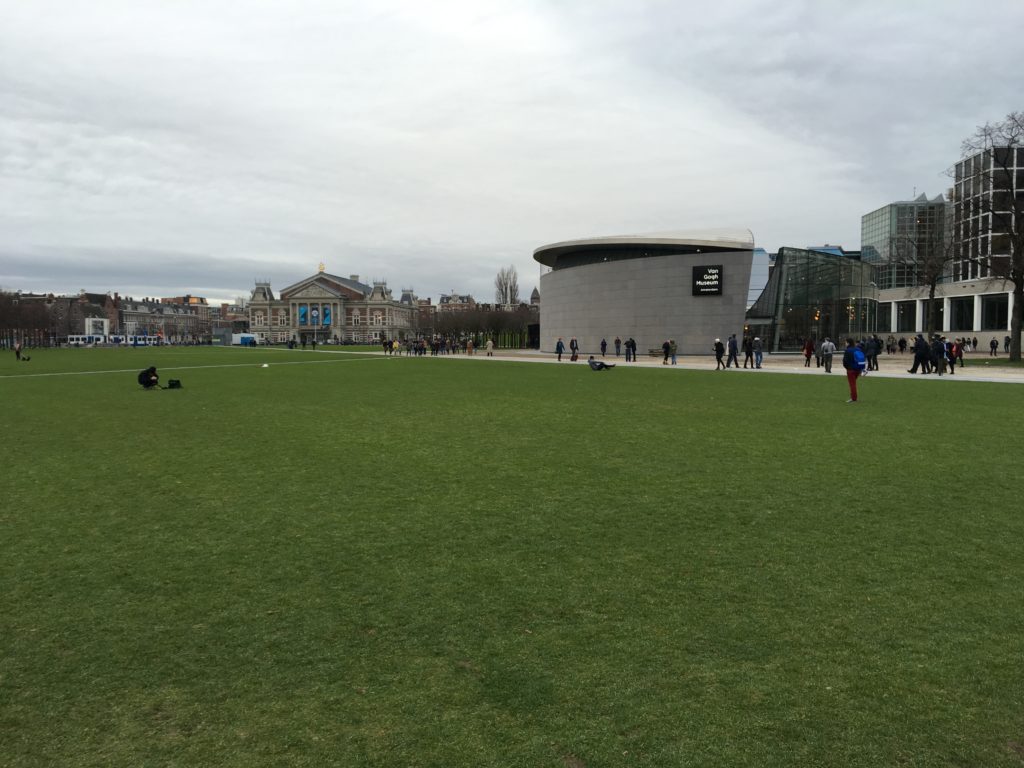 On the other side of the museum square across from Rijksmuseum is the Van Gogh Museum. This is another cool museum that walks you through the life and early workings of Vincent Van Gogh, a famous Dutch Post-Impressionist painter who lived in the late 1800s. The museum has four floors, each with its own collection of galleries representing the different stages of Van Gogh’s life. Although the museum houses many of his original paintings, unfortunately one of his most famed pieces, “The Starry Night,” is located in the Museum of Modern Art in New York City. Nonetheless, this is a stop that you should definitely check out.
On the other side of the museum square across from Rijksmuseum is the Van Gogh Museum. This is another cool museum that walks you through the life and early workings of Vincent Van Gogh, a famous Dutch Post-Impressionist painter who lived in the late 1800s. The museum has four floors, each with its own collection of galleries representing the different stages of Van Gogh’s life. Although the museum houses many of his original paintings, unfortunately one of his most famed pieces, “The Starry Night,” is located in the Museum of Modern Art in New York City. Nonetheless, this is a stop that you should definitely check out.
Anne Frank House
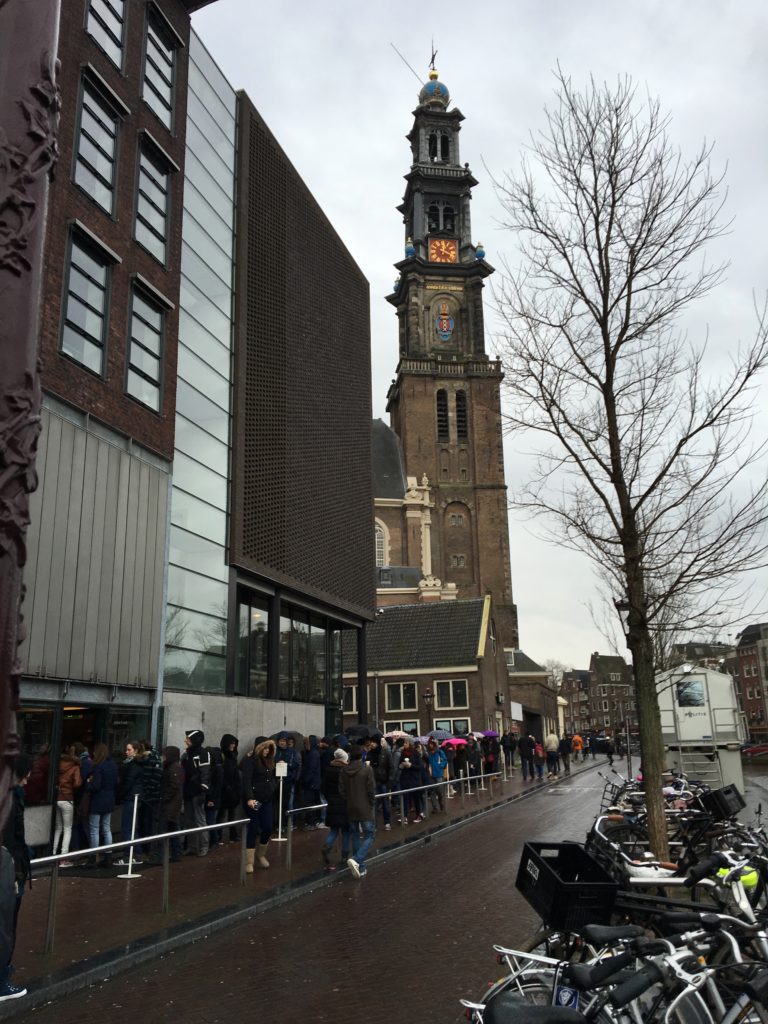 Relive the last years of a Portuguese Jewish family that fled Germany during World War II and hid in Nazi-occupied Holland. The Anne Frank House is located directly next to Wester Church, and is where a young Jewish girl documented her final months in hiding. Anne Frank’s journal entries were later published as “The Diary of a Young Girl.” In this journal, she wrote about her days hiding in the attic from Nazis as well as the Nazi assault on the Netherlands. This journal represents one of the only firsthand accounts of the invasion. A fair warning, the line for the house tour is always long.
Relive the last years of a Portuguese Jewish family that fled Germany during World War II and hid in Nazi-occupied Holland. The Anne Frank House is located directly next to Wester Church, and is where a young Jewish girl documented her final months in hiding. Anne Frank’s journal entries were later published as “The Diary of a Young Girl.” In this journal, she wrote about her days hiding in the attic from Nazis as well as the Nazi assault on the Netherlands. This journal represents one of the only firsthand accounts of the invasion. A fair warning, the line for the house tour is always long.
Heineken Experience
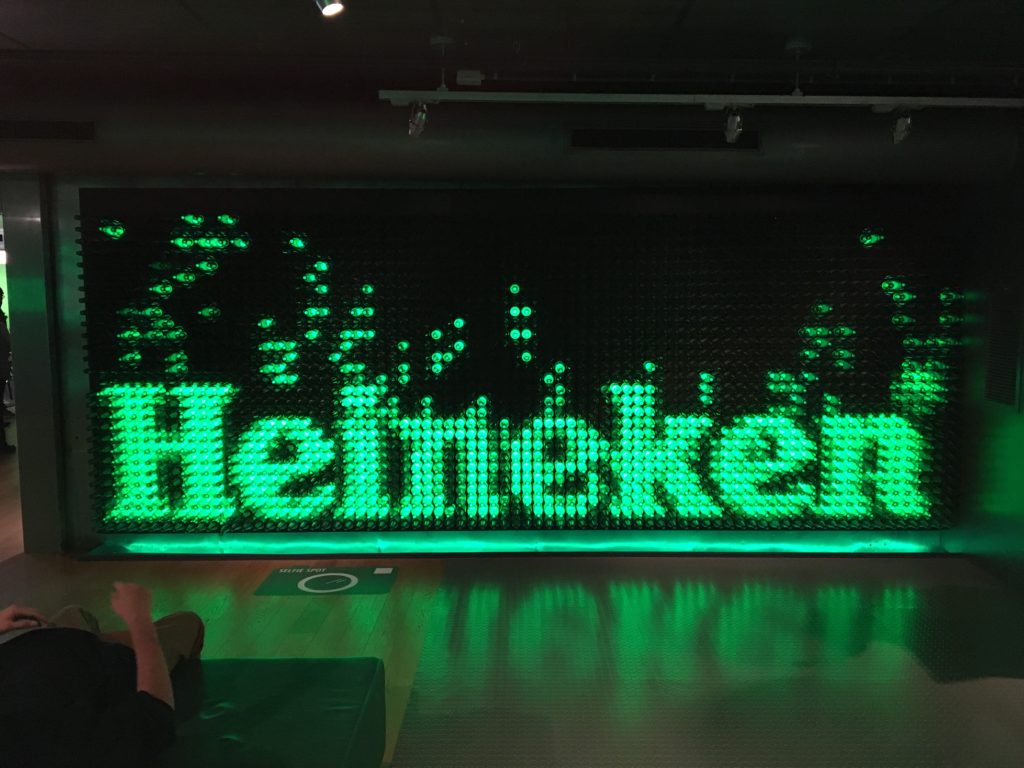
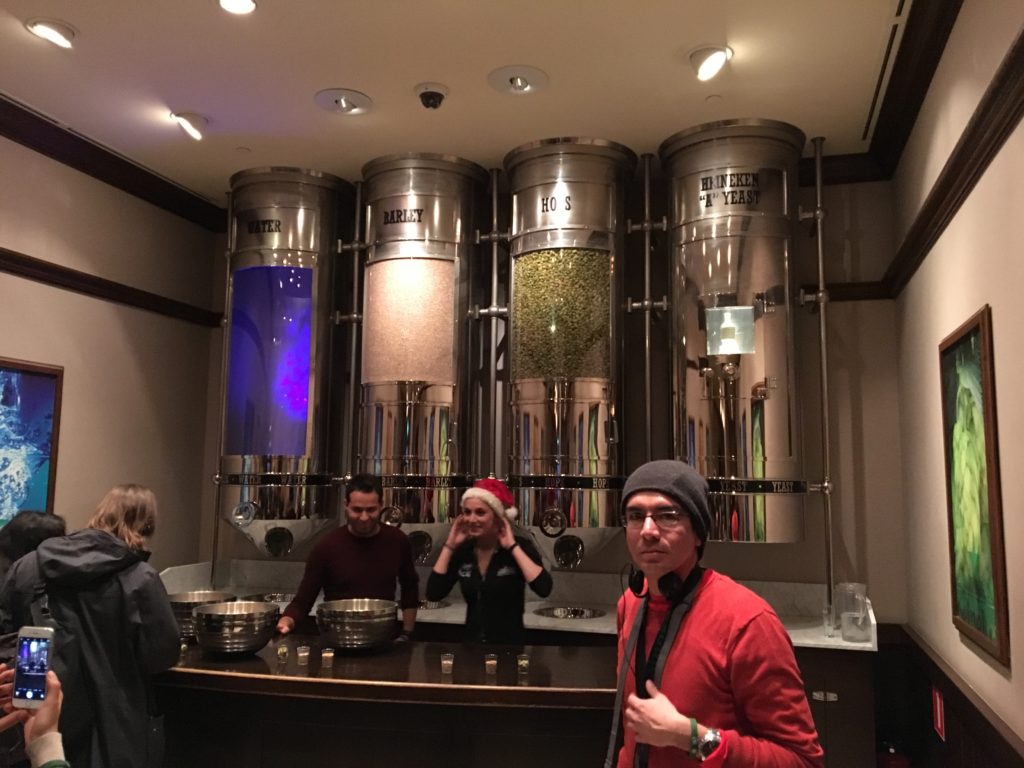 One of the most popular beers in the world has its roots in Amsterdam. Heineken invites you to learn about the history of their beer as well as its brewing process in the Heineken Experience, a walk-through attraction for all ages 18 and up. After a tour of the facility, Heineken quenches your thirst with a couple beers on the house!
One of the most popular beers in the world has its roots in Amsterdam. Heineken invites you to learn about the history of their beer as well as its brewing process in the Heineken Experience, a walk-through attraction for all ages 18 and up. After a tour of the facility, Heineken quenches your thirst with a couple beers on the house!
Countryside Windmills and Fishing Villages
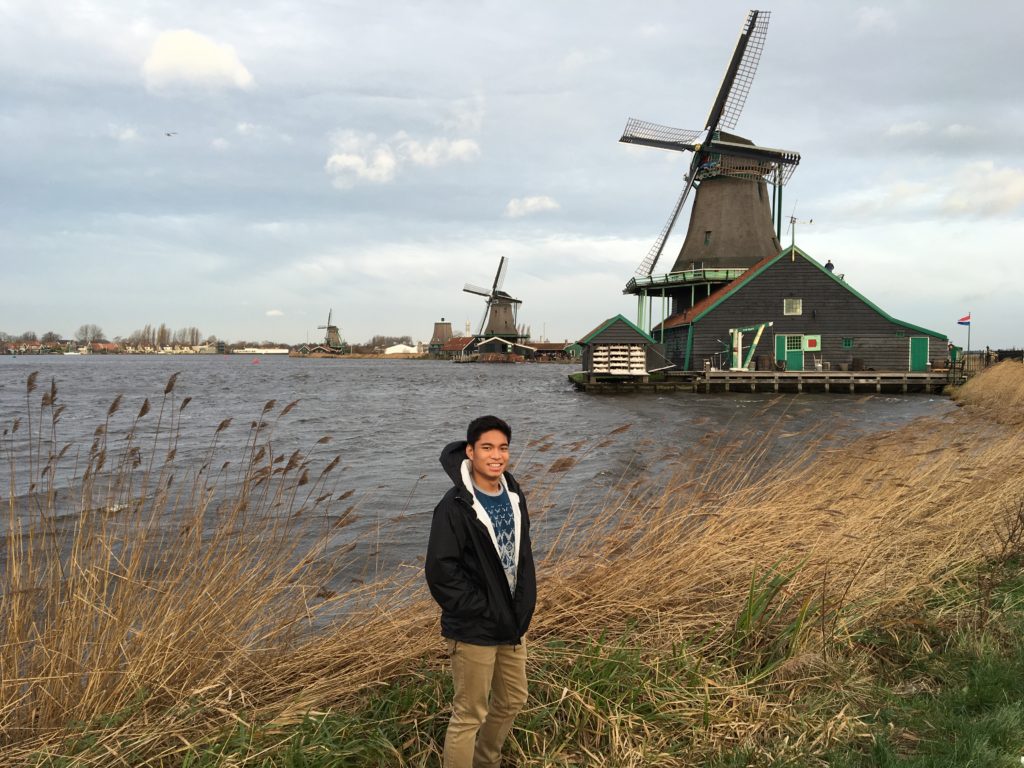 If you wish to immerse yourself deeper into Dutch history, sign up for the Volendam, Marken, and Windmills tour which is a half-day excursion that takes you to view the Dutch countryside and to the famous Zaanse Schans windmills. “Behind every major success stood a windmill.” 30,000 of these windmills used to stand across the flat plains of the Netherlands and for centuries, they were an integral part of Dutch life. They helped to process grains and fabrics, and eventually allowed for the industrial era that helped build the Dutch navy.
If you wish to immerse yourself deeper into Dutch history, sign up for the Volendam, Marken, and Windmills tour which is a half-day excursion that takes you to view the Dutch countryside and to the famous Zaanse Schans windmills. “Behind every major success stood a windmill.” 30,000 of these windmills used to stand across the flat plains of the Netherlands and for centuries, they were an integral part of Dutch life. They helped to process grains and fabrics, and eventually allowed for the industrial era that helped build the Dutch navy.
Christmas Market
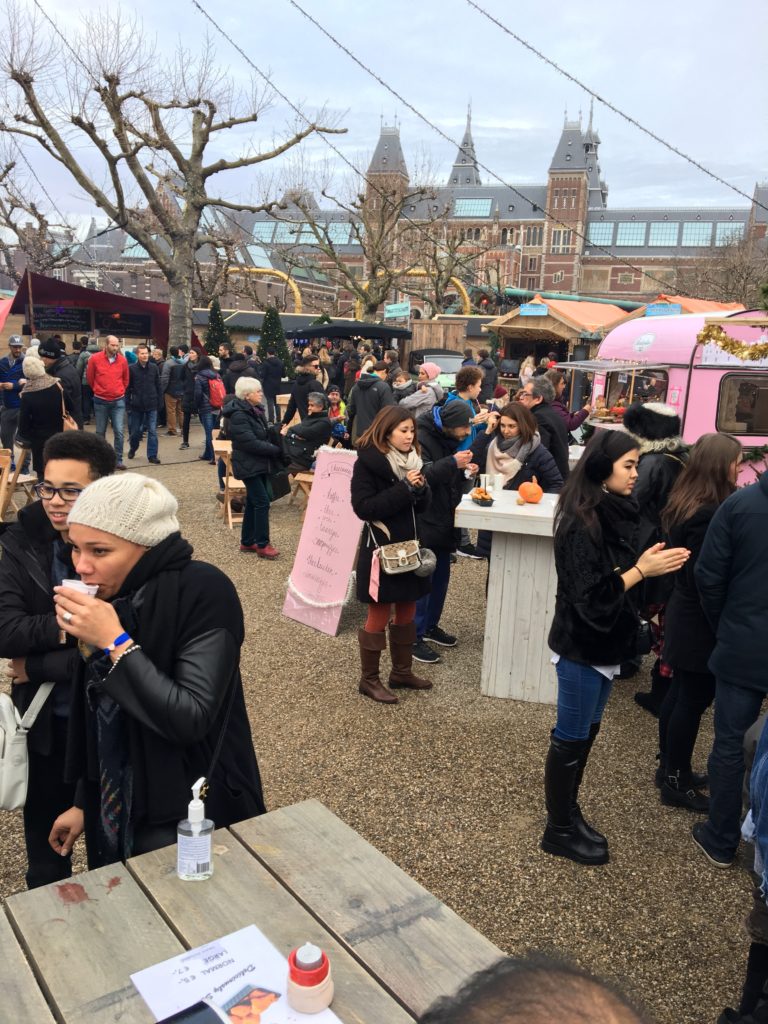 Since the museum square behind Rijksmuseum acts as the cultural heart of Amsterdam, you will find that the area is used for the city’s Christmas market during the holidays. This market comes complete with an ice skating rink a few steps in front of the I amsterdam sign. Although you can buy several homemade crafts and souvenirs, the booths at this market mainly sell food and beverages; large hot dogs, hot chocolate, and hot wine to name a few. So if you find yourself in Amsterdam during the holidays or during any festive season, be sure to check out the museum square after you have explored Rijksmuseum!
Since the museum square behind Rijksmuseum acts as the cultural heart of Amsterdam, you will find that the area is used for the city’s Christmas market during the holidays. This market comes complete with an ice skating rink a few steps in front of the I amsterdam sign. Although you can buy several homemade crafts and souvenirs, the booths at this market mainly sell food and beverages; large hot dogs, hot chocolate, and hot wine to name a few. So if you find yourself in Amsterdam during the holidays or during any festive season, be sure to check out the museum square after you have explored Rijksmuseum!
Coffeeshops & Red-light District
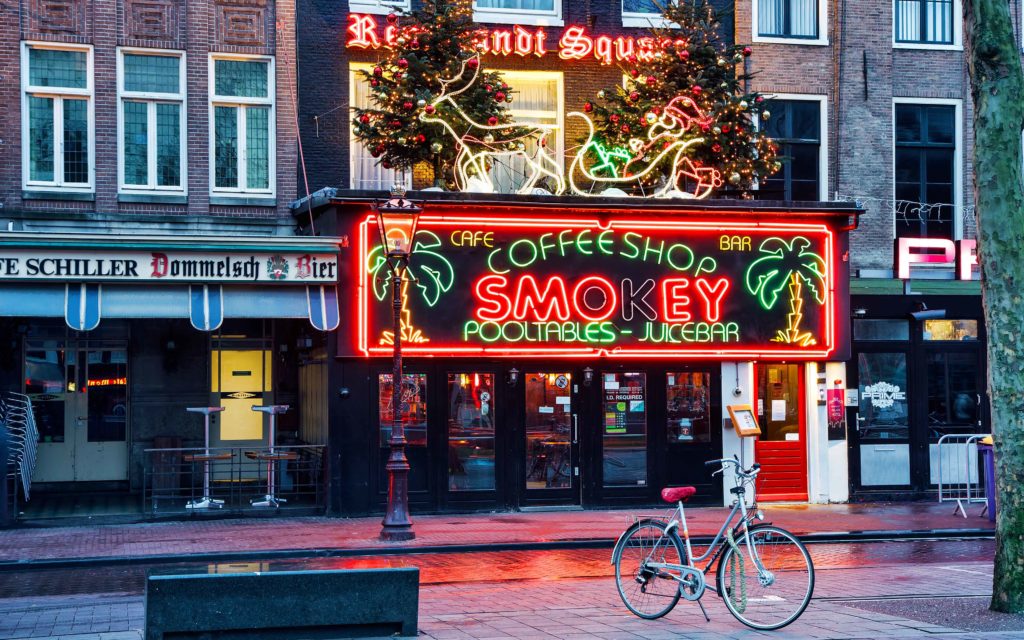 So, I knew I couldn’t write a complete Amsterdam travel guide without mentioning the city’s numerous coffeeshops as well as the famous Red Light District.
So, I knew I couldn’t write a complete Amsterdam travel guide without mentioning the city’s numerous coffeeshops as well as the famous Red Light District.
I assume that you know what I’m trying to imply when I say coffeeshop, so it goes without saying – no, they don’t sell actual coffee. Although the names of these establishments literally use the word coffeeshop, a few innocent tourists might walk into one expecting to order a fancy latte only to find that they’ve stepped foot into a recreational dispensary. There are more than 200 of these “coffeeshops” in Amsterdam (which might also explain why there are so many museums), and in the coffeeshops, you might notice that there are more tourists than locals; however, that wasn’t always the case. In 2012, laws only allowed Dutch nationals to consume the products of these dispensaries, but lucky for you, the laws were exempted allowing tourists to participate in the fun as well.
Interestingly enough, the Red Light District is located in the center of the city. It is the most well-known part of town and is what many people around the world associate Amsterdam with (that and the coffeeshops). After dusk, this area of Amsterdam booms with life as streets and alleyways become jam packed with tourists and locals. The Red Light District is not for the purest of hearts. Walking through, you’ll see an abundance of brothels, sex shops, peep shows, and prostitutes dancing behind all-glass doors for everyone to see. There is even a prostitution museum. Some tips for the Red Light District: Don’t bring your camera, you could get into huge trouble if you are caught trying to take pics. Don’t buy drugs off the streets from sketchy characters, that’s what the coffee shops are for. Travel in groups, this area gets really crowded so it’d be better if you had a buddy with you. Be safe, pick-pocketing is common in congested areas so keep your valuables close to you and accounted for.
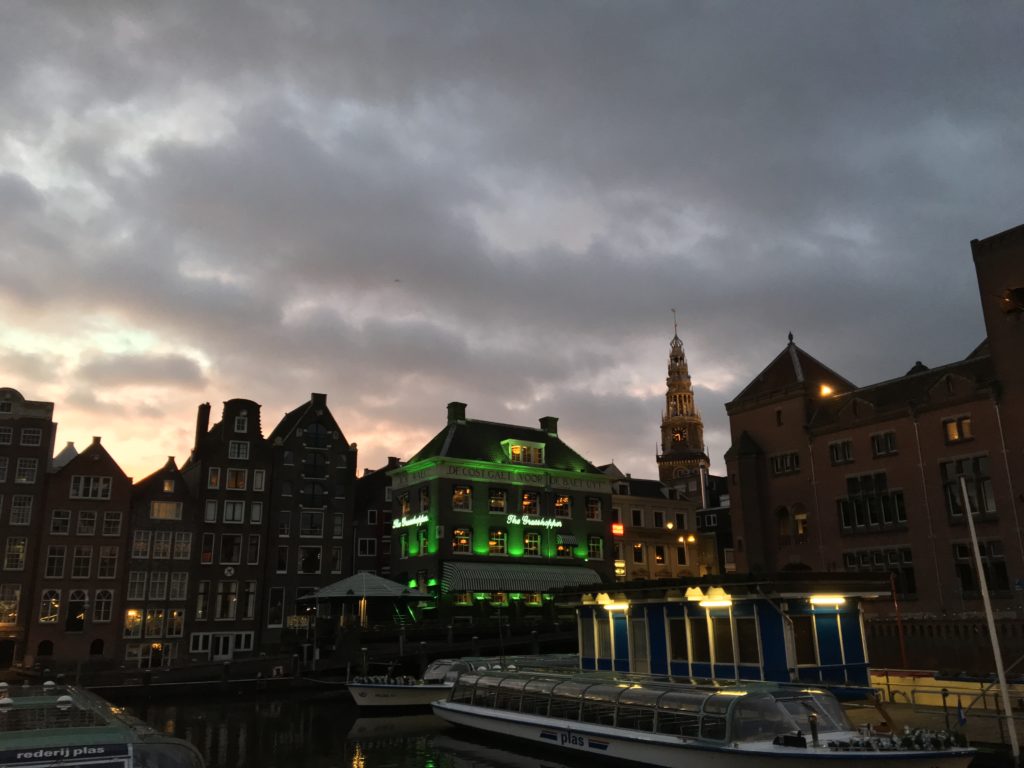 Amsterdam is a city of pure excitement. It remains as one of my favorite European cities, and I hope it can make it to the top of your list as well. You won’t know until you go see for yourself.
Amsterdam is a city of pure excitement. It remains as one of my favorite European cities, and I hope it can make it to the top of your list as well. You won’t know until you go see for yourself.

